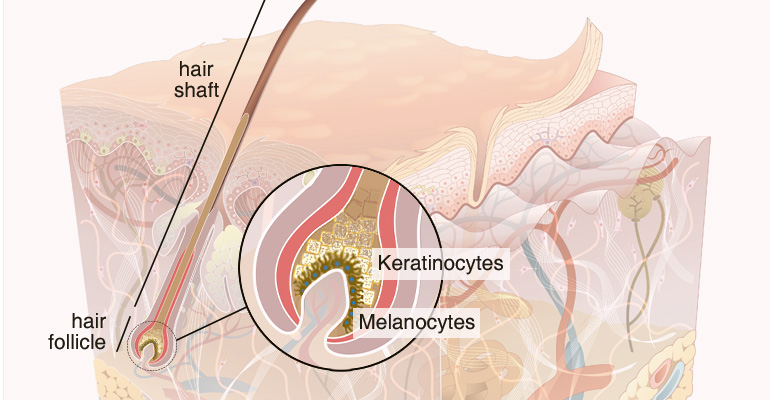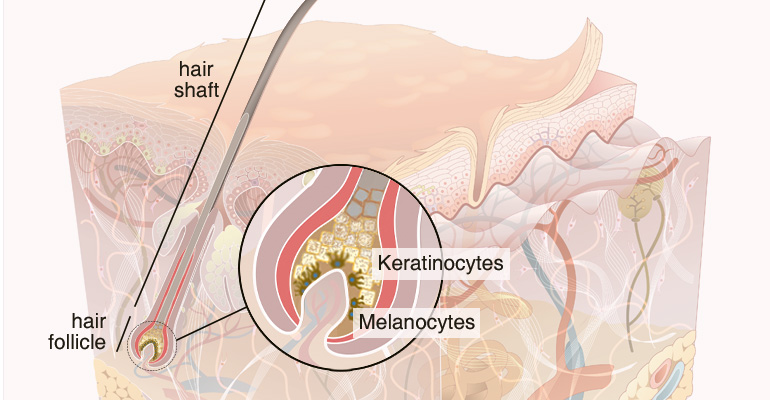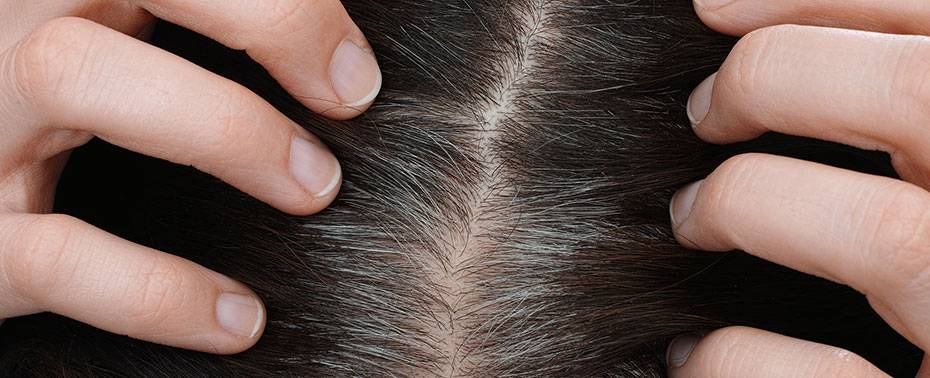Depending on the individual, hair color can be from blond to brown, passing through red. This coloration is the result of melanin pigments in the hair shaft. The different types of pigments that exist are pheomelanins responsible for blond to red color, and eumelanins, responsible for brown shades. The proportion of these two pigments depends on the genetic makeup of each of us and explains the broad diversity of hair colors.
Biologically, melanin is synthesized during the process of melanogenesis by specialized cells called melanocytes, located in the subcutaneous hair follicle. These cells transfer their pigments to adjacent keratinocytes that will differentiate and congregate to form a pigmented hair shaft.

With increasing age but also resulting from stress, hair progressively loses its pigmentation. This phenomenon, called greying, results from the presence of oxidizing molecules in the hair follicle. They are produced during the various steps of melanogenesis. In addition, exposure to certain environmental factors such as UV or pollution accentuates the production of free radicals. The resulting oxidative stress is the origin of an inactivation of enzymes involved in melanogenesis and/or the death of melanocytes. Cellular machinery is “jammed” and melanin production decreases. Melanocytes therefore have fewer pigments to transfer to keratinocytes, that continue to multiply and differentiate. The hair shaft being formed contains less and less melanin and so the hair becomes grey and then white.
Beyond the loss of color, studies have shown that the physical properties of grey hair also change. These hairs become thin, brittle, dull and are harder to style.

One of the common ways to overcome the onset of greying of hair is dying. This practice, however, requires regular upkeep and may involve the repeated use of dyes or bleaches that are more or less aggressive and that is likely to make hair even more sensitive and fragile.
A promising approach is to restore the natural color to hair by reactivating the endogenous biological pathways of pigmentation. SILAB has come to understand the greying of hair in a pioneering manner by initially characterizing the molecular modifications of grey hair. Raman microspectroscopy has shown for the first time that during greying there are modifications of the organization of lipids and the conformation of proteins that affect the structural quality of hair.
This approach has inspired the development of AGREYNIST®, an active ingredient obtained from black oats and spiny restharrow. As a result of its detoxifying and protective action, AGREYNIST® revives the enzymatic machinery of pigmentation to promote repigmentation of the hair fiber and to improve the structural quality of hair.






